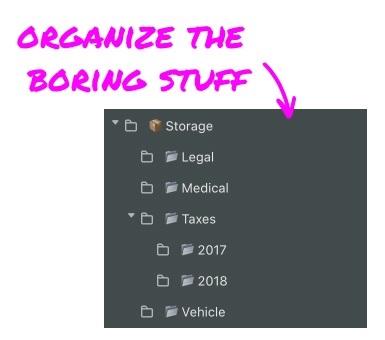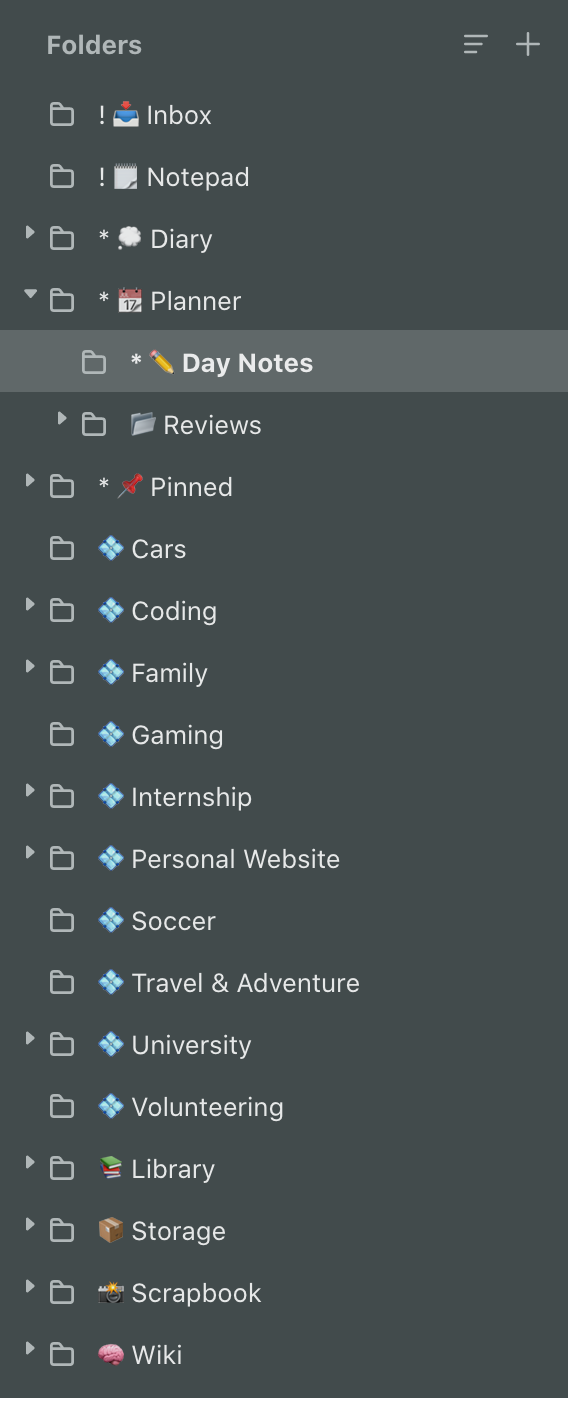
If you’re like me, taking digital notes can feel somewhat magical. That semi-infinite space in the cloud is there just waiting for you to fill it up with your notes, documents, PDFs, web clippings, photos, drawings, even tables — anything you can think of or toss at it, it’s there forever, accessible from anywhere. Before you know it, there are piles and piles of notes!
Apps like Nimbus make it a breeze to collect and store what’s most important to us, and a note-taking system can be a powerful productivity tool when used thoughtfully. But just like our bedroom closets in the physical realm can easily devolve into cluttered chaos despite our best intentions — good luck finding that sweater! — so can our notes in the digital realm over time.
Until the A.I. bots take over and solve all our organizational woes, a little up-front thought given to folder and/or tag structure can be beneficial to our future selves. This guide aims to give you a simple-but-effective path to digital zen, whether you’re just getting started with a sparkling-new Nimbus workspace, or you’re the owner of a venerable mountain of notes.
Finding your roots
Have you ever put effort into deciding which folders should live at the top level of your workspace, only to struggle later to pick the right bucket, every dang time you add a new note? Have you ever gone crazy and built an intricate folder structure, only to eventually end up with a nested, hierarchical mess?
Perhaps over time you became tired of fighting the system, so you decided to simply toss everything into one giant bucket of mixed notes and rely heavily on search. But then notes got buried and forgotten over time, to the point that they weren’t of much use unless you could think of a specific title or keyword to search for. An antidote to problems like these is an exercise to find your “roots.”
A root can be defined as any primary activity, special interest, main context, or key responsibility that pertains to your everyday life. You can think of them as the “major themes” of your life. Here are some examples:
- Significant other
- Child, parent, or sibling
- Passion project
- Employer
- Organization or university
- Club or activity
- Major client
- Pet
- Side business
- Favorite topic or hobby
- Volunteer organization
- Routine obligation
I recommend that you form this list on a piece of paper or in a blank document, to make it malleable & easy to change as ideas come to mind.
 Brainstorming roots
Brainstorming roots
Your “roots,” predictably, become your main folders in Nimbus. I like to give them an icon like “?” so that they stand out — in fact, I’ll be using icons in folder names liberally throughout this guide. Of course, the choice of style is yours.
 Implementing roots in Nimbus
Implementing roots in Nimbus
Structuring subfolders
Let’s go one level deeper and look at the internal structure of one of the root folders. Underneath the root named “University,” there are two nested levels of subfolders organized by a date scheme (more on this in a minute). At the deepest level are the binders that hold actual notes. The next example shows what this means and how I visually distinguish between them:
 Example of inner folder structure using date-based organization
Example of inner folder structure using date-based organization
Expanding the “Coding” root, this time the subfolders are organized topically instead of by date. As before, the innermost “Scrapbook” and “Notes” are given unique icons to designate them as binders.
 Example of inner folder structure using topical organization
Example of inner folder structure using topical organization
Generally, I’ll alternate between three different patterns for the inner folders: date-based, topical, or collection-style. Sometimes I will use a hybrid of more than one, which sounds more complicated than it really is: I’ve actually shown you examples of hybrid structures above. Can you spot them?
Evolving the system
As time goes on, you may find yourself storing information that falls outside of only a few core categories. Try to take a moment to write down a few things you think you might collect because you want to; perhaps for reference, future inspiration, or things you don’t want to forget.
 Brainstorming things you might collect
Brainstorming things you might collect
Planning for expansion is key to being successful over time. As you form your list of collections, here are three organizational ideas to experiment with. Feel free to adopt some, all, or none of them.
 More ways to organize content
More ways to organize content
There is a class of data that most of us have to keep track of not because we want to necessarily, but because we’re obligated to. These records could be anything from tax documents, legal papers, or medical records that you’d like to hang onto in a safe corner of your Nimbus BUT that you don’t necessarily want to see all the time.
 Keeping a separate folder for records
Keeping a separate folder for records
Bonus: organizing for action
At the beginning of this article, I claimed that note-taking applications can also be powerful productivity tools. In this final section, we’ll see why.
Already we have some powerful tools at our disposal for setting up a tidy, well-behaved notes app that’s ready for all the content we’ll soon throw at it. But for the encore, let’s turn the system from a boring filing cabinet into a personal studio to be creative and/or get things done.
Time for one more list, this time of the tools you find essential to get things done. You might think over your everyday workflows and recall what tools you use to plan, keep track of details, take meeting notes, capture your personal reflections, etc.
 Listing essential tools for the studio
Listing essential tools for the studio
A few tools I find essential to my action “kit” include:
- An inbox: a place to put things that I plan to deal with later.
- A planner: a place to keep daily notes, track goals & do reviews.
- A diary: a place to record my personal reflections.
- A notepad: a loose-leaf pad where I can freely scribble throwaway, temporary, or draft notes without thinking for a second of where to put it.
Putting it all together
Before we end, let’s have a glimpse at how all of this could look like combined into one system:
 Example of combined system
Example of combined system
You might have noticed that some folders have an exclamation point (!) or an asterisk (*) in front of them. That’s just a trick that I use to group some of the items, especially the tools, up toward the top of the list. Keep in mind that your results don’t need to look exactly the same!
Conclusion
Well, that’s a wrap! Thanks for sticking with me this far. I genuinely hope this little guide helps to stretch the limits of your imagination in the ways that you can use Nimbus, and that I’ve inspired your organizational journey in some small way.
If you feel so inclined, you can drop a note to cameron_sea@fastmail.com to let me know you found it useful and/or to pass along suggestions for improvement. Good luck!
Found it useful? Share the article with your community
Subscribe to our blog!
Get weekly tips and insights on how to grow your business
 Cameron Flint is a productivity enthusiast, Basenji dad, fast car nerd, and professional software engineer of 9+ years. Any opinions expressed here are his own.
Cameron Flint is a productivity enthusiast, Basenji dad, fast car nerd, and professional software engineer of 9+ years. Any opinions expressed here are his own.